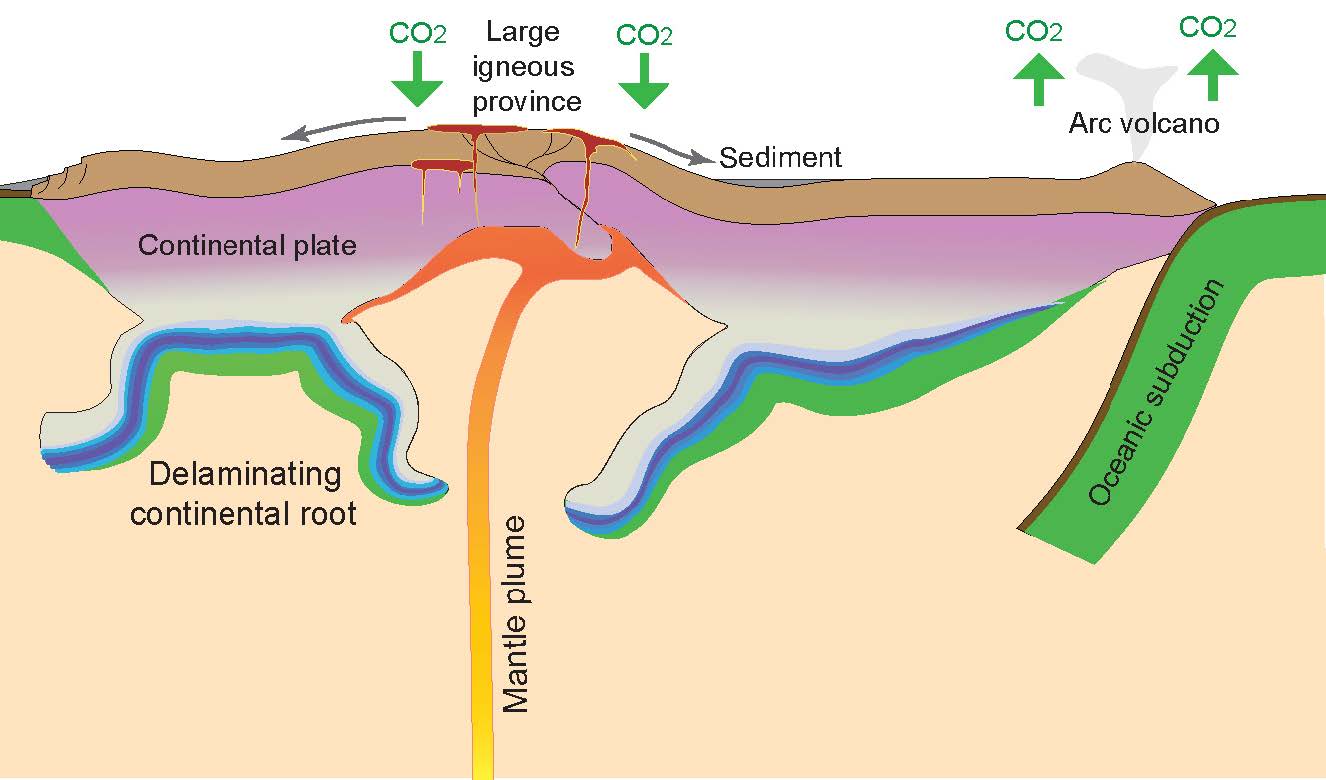Lijun Liu

Impacts of Continental Evolution on Global Climate Change
Continents—the oldest tectonic units on Earth—preserve a rich record for how the planet evolved over time. Since one billion years ago (1 Ga), the Earth has experienced two cycles of supercontinent formation and dispersal, these being Rodinia (~1.0 Ga) and Pangaea (~0.3 Ga). During this course, the geologic condition of Earth surface changed dramatically. Prior to Phanerozoic (0.54 Ga to now), the surface of most continents was erosive, with little sedimentary record preserved today. During the early Phanerozoic (0.54-0.3 Ga), global continental elevation significantly dropped, resulting in substantial marine inundation and deposition. From the start of the Pangaea cycle, the continental environment shifted again towards erosion followed by sedimentation, but on a globally less consistent pace than during the Rodinia cycle. The global climate also switched from cold to warm multiple times since 1.0 Ga. Recent studies suggest that this long-term climate evolution is coupled with the tectonic history, which modulates the Earth carbon cycle through continental rifting, oceanic subduction and massive volcanic eruptions.
A continental lithosphere consists of a buoyant, thin crust on top and a denser, thick lithospheric mantle underneath, both formed billions of years ago. According to the theory of plate tectonics, the continental lithosphere passively drifts around at Earth’s surface, without participating in the underlying mantle convection. This is traditionally thought to be due to the positive buoyancy and large strength of the lithosphere that prevent it from deforming internally or sinking into Earth’s interior. However, increasing amounts of geologic and geophysical observations suggest that this is not the case. Professor Liu suggests the above tectonic and climate observations are related to temporal variations of the continental lithosphere, whose nature should differ from the traditional wisdom. During his Center appointment, he will implement a multidisciplinary geodynamic approach to better understand continental evolution and associated topographic and environmental impacts.
